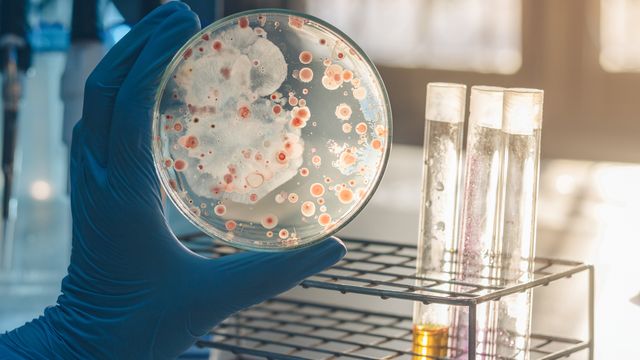Microbiology & Culture Testing
In clinical and healthcare settings, microbiology and culture testing is a cornerstone of diagnostics. This form of testing involves the isolation, identification, and quantification of microorganisms from various specimens such as blood, urine, sputum, or tissue samples. The primary goal is to determine whether an infection is present and, if so, which organism(s) are responsible for it.
The process begins with proper specimen collection, ensuring that the sample is free from contamination and accurately represents the site of interest. Once collected, specimens undergo a series of steps including transport, inoculation onto culture media, incubation, and observation for growth patterns indicative of specific microorganisms.
Microbiology laboratories use a range of advanced techniques to identify pathogens effectively. These methods include Gram staining, biochemical tests, serological assays, and molecular diagnostics like PCR (Polymerase Chain Reaction). The choice of method depends on the suspected pathogen and clinical scenario. For instance, gram-positive cocci may be identified using Gram staining followed by further testing with catalase or coagulase tests.
Accurate identification is critical because it guides appropriate antimicrobial therapy. Misidentifying a microorganism could lead to ineffective treatment and potential resistance development. Therefore, laboratories must adhere strictly to recognized standards such as those outlined in the Clinical and Laboratory Standards Institute (CLSI) guidelines.
Culture testing also plays an important role in monitoring hospital-acquired infections (HAIs). HAIs are a significant concern in healthcare settings due to their potential impact on patient outcomes. Regular culture testing helps monitor infection rates, identify trends, and implement preventive measures promptly. This proactive approach ensures that healthcare facilities maintain high standards of hygiene and reduce the risk of nosocomial infections.
Moreover, culture testing supports research initiatives aimed at understanding the epidemiology of infectious diseases better. By continuously monitoring microbial populations in different environments, researchers can develop new strategies for controlling outbreaks and improving overall public health.
In conclusion, microbiology and culture testing are indispensable tools in clinical diagnostics and healthcare management. They provide essential information needed to make informed decisions about patient care and hospital operations. Their importance cannot be overstated given the ongoing challenges posed by antibiotic resistance and emerging infectious diseases.
Scope and Methodology
The scope of microbiology and culture testing encompasses several key areas, including specimen collection, transport, preparation, inoculation onto appropriate media, incubation conditions, observation for growth characteristics, identification methods, and final interpretation. Each step is crucial to ensure accurate results that can inform clinical decisions.
Specimen collection must be performed following strict protocols to minimize contamination risks. This includes using sterile techniques when drawing blood or collecting urine samples. Once collected, specimens should be transported under optimal conditions to reach the laboratory as soon as possible after collection. Refrigeration is often necessary depending on the type of sample and intended tests.
Preparation involves processing raw materials into forms suitable for inoculation onto culture media. This might include dilution steps or concentration procedures based on the expected amount of microorganisms present in the specimen. Inoculation then occurs by streaking or pouring techniques, depending on the desired distribution pattern across the medium.
Incubation is carried out under controlled environmental conditions designed to promote optimal growth while inhibiting non-targeted organisms. Temperature and humidity levels are carefully monitored throughout this process. After sufficient time has elapsed (typically ranging from hours to days), cultures are examined visually for any visible signs of microbial activity such as color changes or turbidity.
Identification methods vary widely but generally involve combining morphological features observed during initial stages with additional tests like biochemical reactions, molecular techniques, or reference databases. Molecular approaches offer rapid identification capabilities but require specialized equipment and expertise to perform correctly.
The final step involves interpreting results in context of the patient’s clinical presentation along with relevant laboratory data. This synthesis helps clinicians diagnose infections accurately and select appropriate treatments promptly.
Industry Applications
- Hospital Infection Control Programs: Monitoring HAIs through regular surveillance cultures provides valuable insights into infection trends within healthcare settings.
- Public Health Surveillance: Large-scale epidemiological studies rely on microbiology laboratories to track the spread of infectious diseases across populations.
- Agricultural Research: Studying pathogenic agents affecting livestock or crops aids in developing effective management plans for disease outbreaks.
- Pharmaceutical Development: Ensuring product safety during manufacturing processes by verifying absence of contaminants.
Competitive Advantage and Market Impact
In today’s competitive healthcare landscape, laboratories offering comprehensive microbiology and culture testing services hold a strategic advantage. These labs not only contribute directly to improved patient outcomes but also play pivotal roles in maintaining regulatory compliance across various sectors.
Achieving certification from recognized bodies like CAP (College of American Pathologists) or ISO/IEC 17025 ensures that laboratories meet stringent quality requirements. Such accreditation enhances credibility among clients and stakeholders, thereby fostering long-term partnerships. Additionally, staying abreast of cutting-edge technologies allows these facilities to offer unique value propositions that set them apart from competitors.
The market for microbiology testing continues to grow driven by increasing incidences of antibiotic-resistant infections and growing emphasis on personalized medicine approaches. Laboratories equipped with advanced platforms can leverage big data analytics to provide actionable insights, driving better healthcare practices. This ability to innovate further cements their position as indispensable partners in the broader healthcare ecosystem.
Moreover, compliance with international standards ensures seamless integration into global supply chains and collaborative research projects. As borders become increasingly porous due to travel patterns, cross-border collaboration becomes essential for sharing information about emerging pathogens efficiently.





